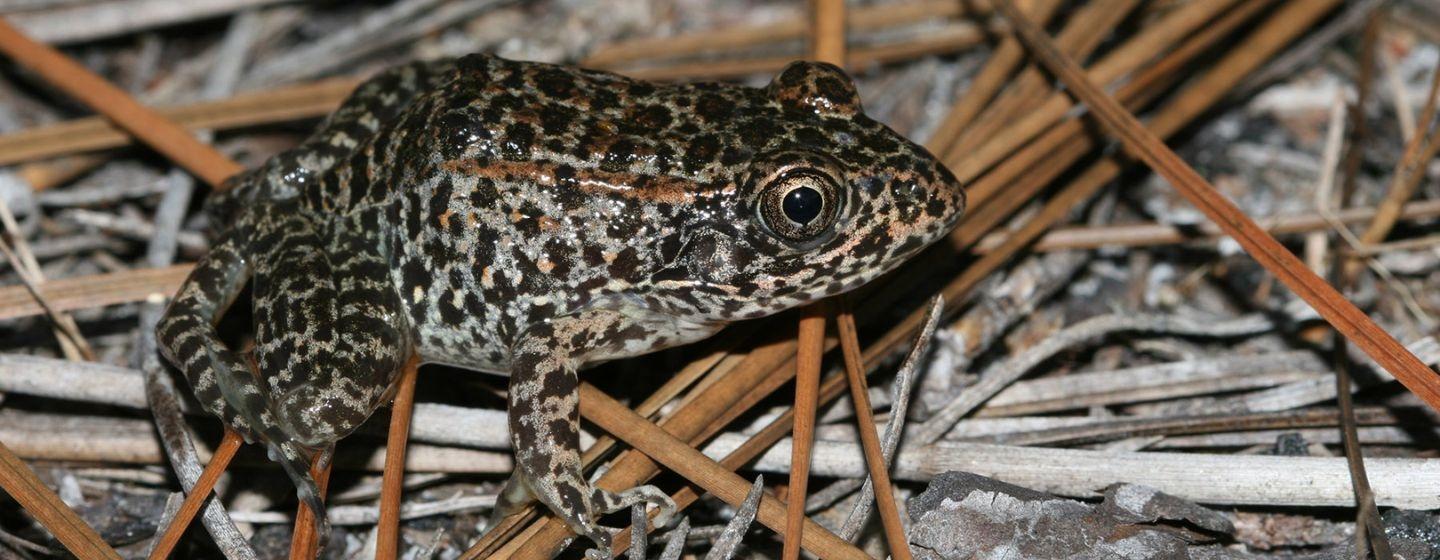Giving Carolina Gopher Frogs a Leg Up


A yearly tradition at the North Carolina Aquarium at Fort Fisher is also part of an important effort to save the endangered Carolina gopher frog.
Every year, North Carolina Wildlife Resources Commission officers at Holly Shelter Game Land collect new masses of Carolina gopher frog eggs and deliver them to the aquarium. 47 egg masses were delivered this year. Aquarium staff then care for the froglets until they can be released back into the wild. The goal is to replenish ponds with gopher frogs and restore their natural habitats across the state.
“For the gopher frog, the habitat must be ideal, and with many breeding habitats lost or destroyed, our team steps in to create the right conditions for the frogs to hatch,” said Ryan McAlarney, assistant husbandry curator at the aquarium. “We then raise the tadpoles to metamorphosis before [releasing] them back into the same pond.”
Once the eggs hatch, aquarium staff move the tadpoles to an outside mesocosm, a specially created habitat for raising the frogs to metamorphosis. The frogs are then returned to the wild.
Gopher frogs are very particular about where they breed and grow up, and that’s part of the reason the species is in trouble.
Gopher frogs require ephemeral ponds or vernal pools, seasonal pools of water that provide habitats for distinctive plants and animals. For the gopher frog, that means a breeding pond large enough to retain water throughout the three to five months of its tadpole stage. However, those ponds must also be shallow enough to dry periodically because the gopher frog prefers to breed in isolated, fish-free ponds.
You can imagine the challenges. When there is too little rain, the ponds dry up. Development can destroy the ponds. In addition, some ponds are deepened and stocked with fish. The aquarium staff says wetland ponds where the gopher frogs live and breed have significantly declined.
The aquarium started the initiative in 2011 to help build wild populations of endangered amphibians by giving them a head start at life. In 2023, the commission delivered 28 egg masses to the aquarium, which yielded 560 tadpoles. Ultimately, 512 frogs were released at the same location where the eggs were collected. That’s a 91% success rate.
All told, teams have released thousands of juvenile frogs back into the wild. However, wildlife officials say only 3 to 4% of the animals survive to adulthood.
Aquarium staff say there are several things we can do to make life easier for gopher frogs and amphibians in general:
Watch this Sci NC story to learn more about efforts to save the Carolina gopher frog.
Some animals get all the attention (*cough* polar bears).